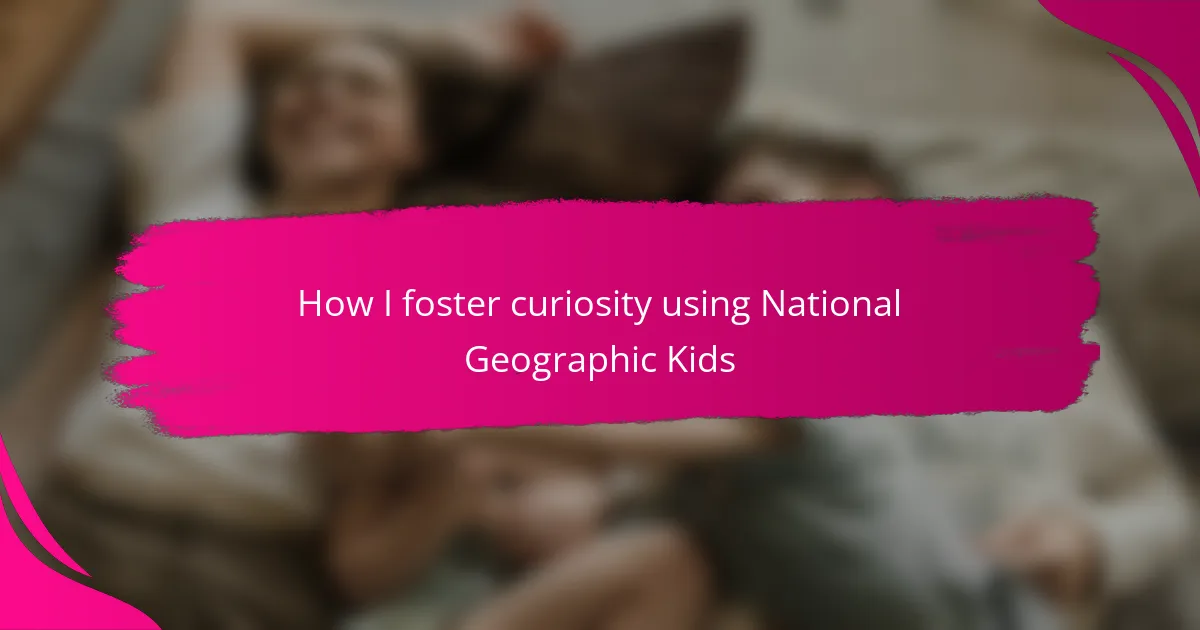Key takeaways
- Curiosity is essential for children’s emotional and intellectual growth, helping them build a foundation for lifelong learning.
- National Geographic Kids enhances learning through engaging visuals and storytelling, making complex topics accessible and memorable.
- Creating a curiosity-friendly environment encourages open-ended questions and exploration, transforming learning into a joyful experience.
- Monitoring children’s interests and adapting learning strategies based on their questions can deepen engagement and inspire further exploration.
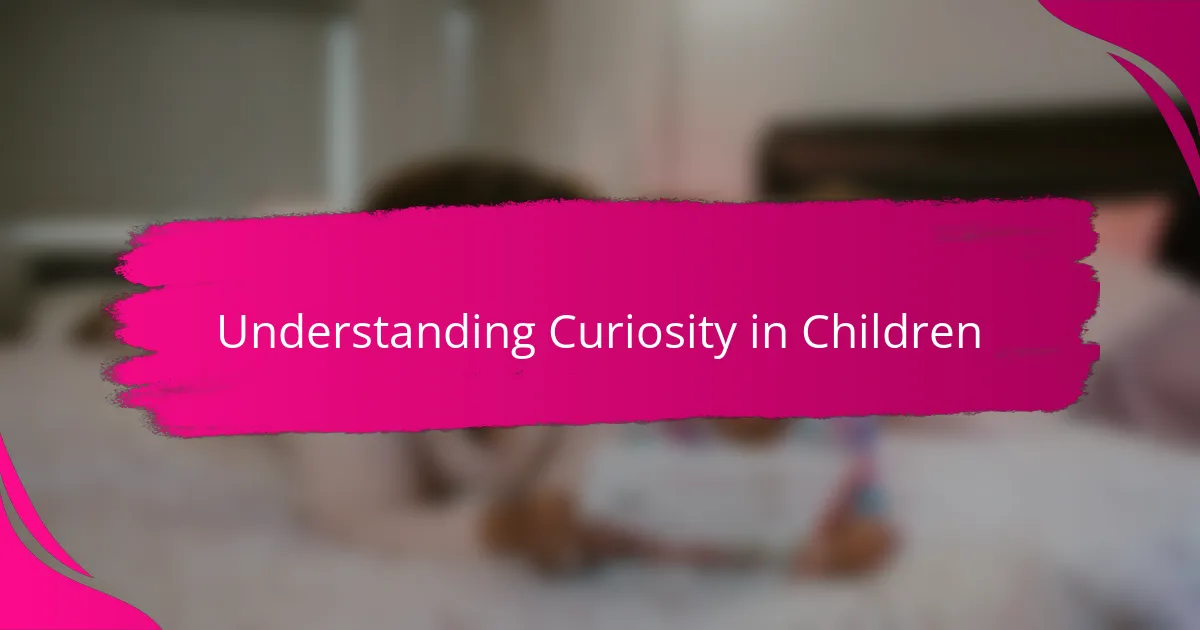
Understanding Curiosity in Children
Curiosity in children is like a spark that sets their learning engine in motion. I’ve noticed my own child’s eyes light up when facing something new—they can’t help but ask “why” or “how” repeatedly, almost as if their mind is racing ahead of me.
Have you ever wondered why children are so drawn to exploring the world around them? From my experience, it’s because their curiosity is tied deeply to their natural desire to understand and make sense of their environment. This eagerness to learn isn’t just a phase; it’s a fundamental part of how they grow emotionally and intellectually.
What fascinates me the most is how curiosity shapes their identity. When my child discovers an interesting fact or makes a new connection, I see a sense of pride and confidence emerging. It’s in these moments that their curiosity isn’t just about gathering information—it’s about building a foundation for lifelong learning.
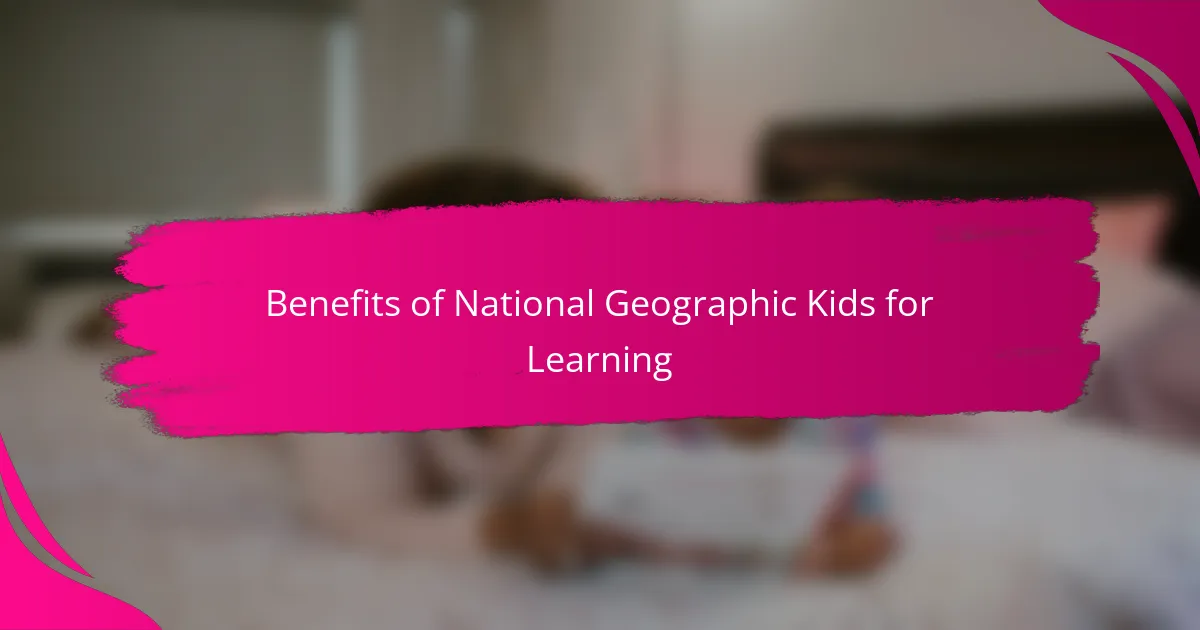
Benefits of National Geographic Kids for Learning
National Geographic Kids is a treasure trove that instantly draws my child in with its vibrant photos and fascinating stories. I’ve seen firsthand how the mix of captivating visuals and clear explanations makes even complex topics feel accessible and exciting. It’s like handing them a key to the world, inviting them to explore everything from wild animals to distant cultures.
What really stands out to me is how this resource nurtures critical thinking without feeling like a lesson. When my child reads about an animal’s habitat or a science fact, they start asking deeper questions and connecting ideas, which sparks meaningful conversations between us. It’s amazing to watch their curiosity bloom naturally, fueled by content designed to engage their minds.
Have you noticed how children tend to remember stories better than dry facts? I have, and National Geographic Kids uses storytelling brilliantly. The way facts are woven into real-world adventures helps my child retain information and develop a genuine love for learning that goes beyond homework—it becomes something they pursue eagerly and independently.
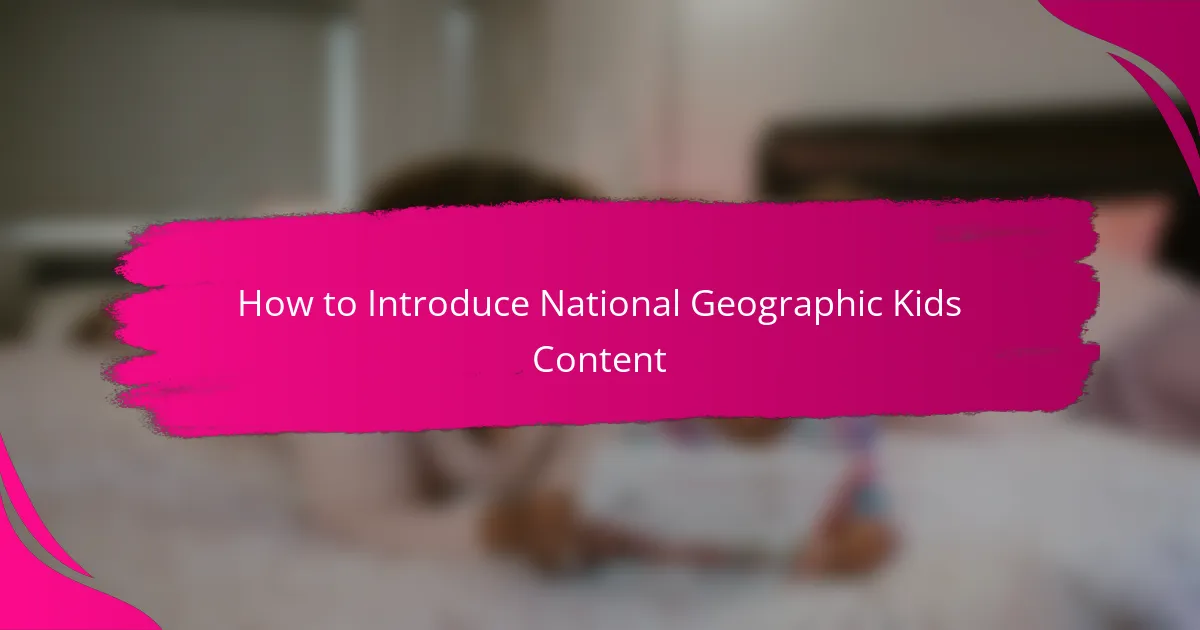
How to Introduce National Geographic Kids Content
Introducing National Geographic Kids content to your child can be as simple as starting with something that catches their eye. I remember handing my child an issue filled with colorful animal photos, and immediately they were hooked, asking questions about each picture. Have you tried letting your child pick their favorite topic first? It makes the experience feel like a personal adventure rather than a chore.
Sometimes, I like to turn it into a shared activity, reading articles together and pausing to chat about interesting facts. This not only deepens their understanding but also makes the learning moments feel warm and connected. Have you noticed how children open up when they feel their curiosity is genuinely welcomed? That’s when the magic truly happens.
For a smoother introduction, I recommend mixing short videos from National Geographic Kids with the printed material. I’ve found that this blend caters to different learning styles and keeps the excitement alive, especially for kids who are more visually or audibly inclined. How often have you seen your child’s eyes light up watching an animal documentary? That same spark can be nurtured with these resources at home.
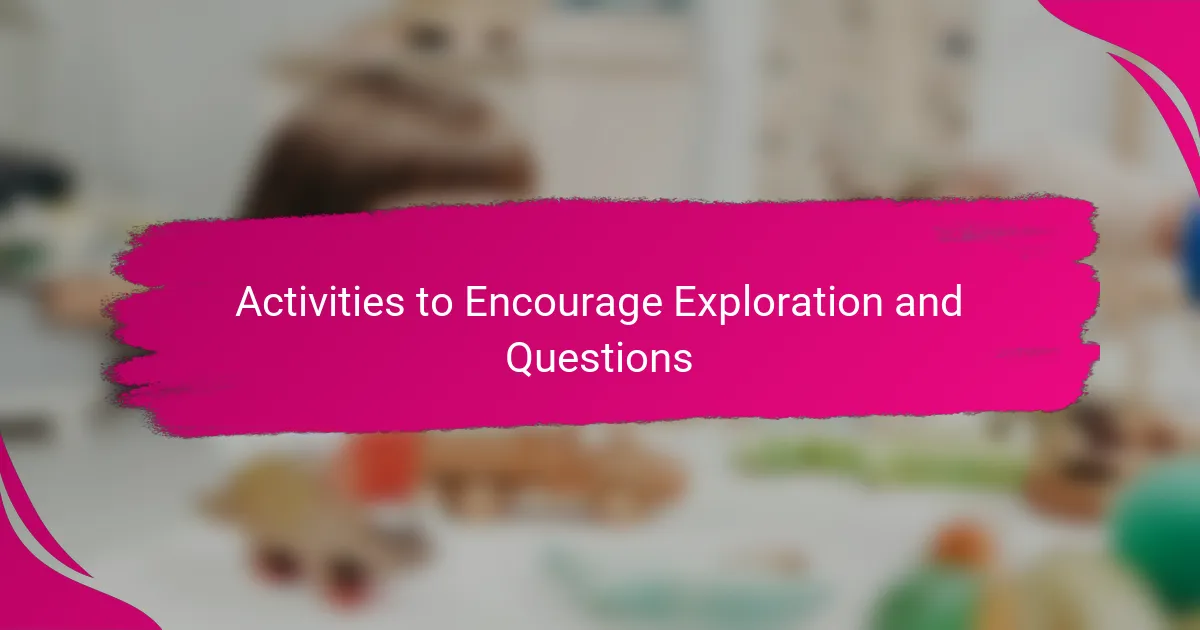
Activities to Encourage Exploration and Questions
One activity I love is setting up a little “exploration station” where my child can dive into National Geographic Kids magazines or books freely. It’s incredible to watch how they pick a photo or article that catches their eye and then start asking questions—sometimes ones I hadn’t even thought about. Have you tried creating a cozy nook where your child feels invited to explore without pressure? From my experience, this simple space sparks curiosity like nothing else.
I also enjoy turning their questions into mini adventures. For instance, when my child wondered why flamingos stand on one leg, we looked up the topic together in National Geographic Kids and then tried a fun experiment in the backyard—balancing on one foot ourselves! It’s moments like this that make learning tangible and memorable. Have you noticed how combining reading with hands-on activities helps solidify understanding in your child?
And sometimes, I suggest my child jot down their questions in a “wonder journal” as we go through National Geographic Kids stories. This habit not only encourages them to keep thinking critically but also gives me insight into their interests and curiosities over time. Isn’t it amazing how a simple notebook can become a window into your child’s mind? Through this, I feel like we’re building a dialogue that extends beyond the pages and into everyday life.
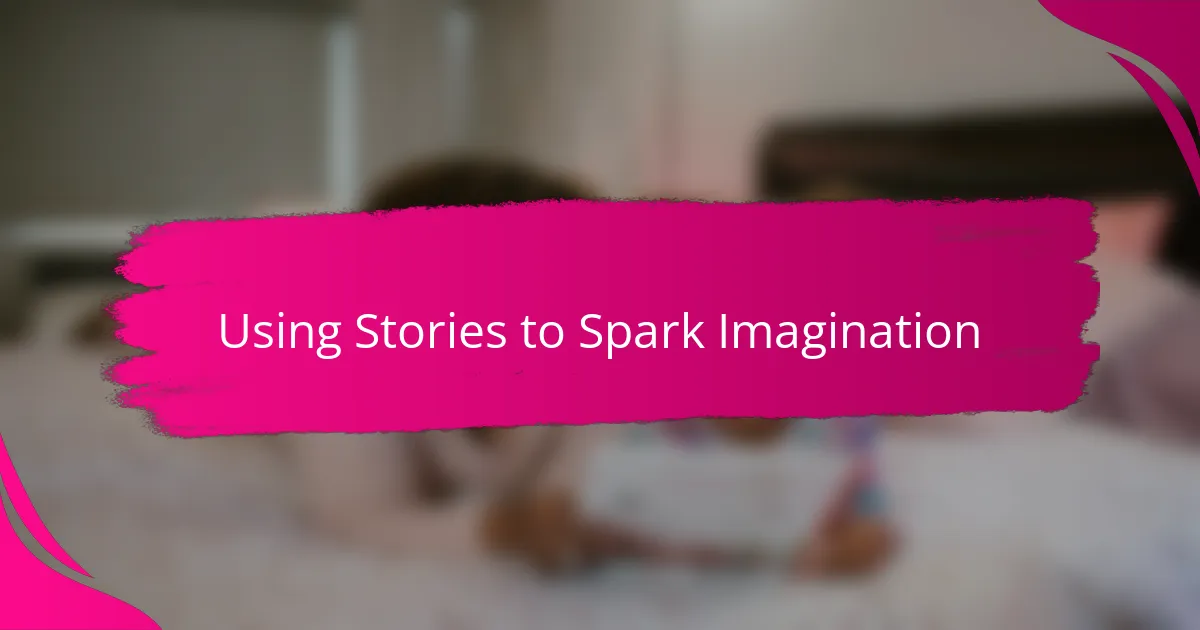
Using Stories to Spark Imagination
Whenever I share stories from National Geographic Kids, I notice how my child’s imagination instantly takes flight. It’s fascinating to see them picture far-off jungles or underwater worlds, as if they’re right there exploring alongside the animals. Have you ever observed how a well-told story can transform facts into vivid adventures? That’s exactly what happens, making learning feel like play.
I remember one afternoon when we read about a curious shark that navigates the deep ocean. Instead of just absorbing the information, my child started inventing their own tale about what the shark might encounter next. Those moments, when imagination blooms from stories, show me the true power of narrative. It’s not just about knowledge; it’s about fostering creativity and wonder that stick with them long after the story ends.
What strikes me most is how stories invite questions naturally. After a captivating article, my child rarely stops at what they’ve read—they want to know more, ask why, and even imagine new possibilities. This cycle of storytelling and questioning feels like a secret recipe for nurturing curiosity, blending learning with endless imagination. Have you experienced that spark before? It’s truly a joy to watch unfold.

Creating a Curiosity-Friendly Environment at Home
Creating a curiosity-friendly environment at home means more than just having books and magazines around—it’s about making space for wonder and questions to flow freely. I’ve found that when my child sees a dedicated spot with National Geographic Kids materials and some nature-related objects nearby, it feels like an invitation to explore rather than a required task. Isn’t it amazing how a simple change in atmosphere can turn ordinary moments into exciting discoveries?
I also try to keep our home buzzing with open-ended conversations. When my child comes running to me with a “why” or “how” question sparked by something they’ve seen or read, I make it a point to pause and dive into their curiosity together. From my experience, these shared moments aren’t just about finding answers—they’re about showing that their questions matter and that learning is a joyful journey. Have you noticed how this kind of attention can ignite even deeper curiosity?
Another thing I’ve learned is that variety keeps the curiosity alive. Mixing up different types of National Geographic Kids content—magazines, videos, games—means my child stays engaged and excited to learn in whichever way suits their mood that day. It’s like offering a buffet of discovery options, and I’ve seen how this freedom to choose encourages my child to follow their unique interests. How often do you see your child’s face light up when they get to lead their own learning adventure?
![]()
Tracking Progress and Adapting Strategies
Tracking progress with National Geographic Kids isn’t about checking off completed articles; it’s about tuning into the shifts in my child’s curiosity over time. I keep an eye on the questions they ask and the topics they revisit, which often reveal what truly fascinates them. Have you ever noticed that certain subjects spark not just interest but a whole chain of questions? Those are the nuggets that show real engagement.
Sometimes, I find that my usual approach needs tweaking. For example, if my child seems less excited by reading alone, I might introduce a related video or a hands-on activity inspired by National Geographic Kids content. Changing gears like this keeps the experience fresh and ensures their curiosity stays fueled. Have you tried adapting your methods based on your child’s mood or focus? It’s amazing how a small shift can reignite their desire to explore.
I also reflect on how these curiosities evolve by discussing observations with my child. We talk about what they’ve learned and what new questions popped up, which helps me tailor upcoming activities and resources to their current interests. Have you noticed how this ongoing dialogue not only tracks progress but also deepens your connection? For me, it’s one of the most rewarding parts of nurturing curiosity.
